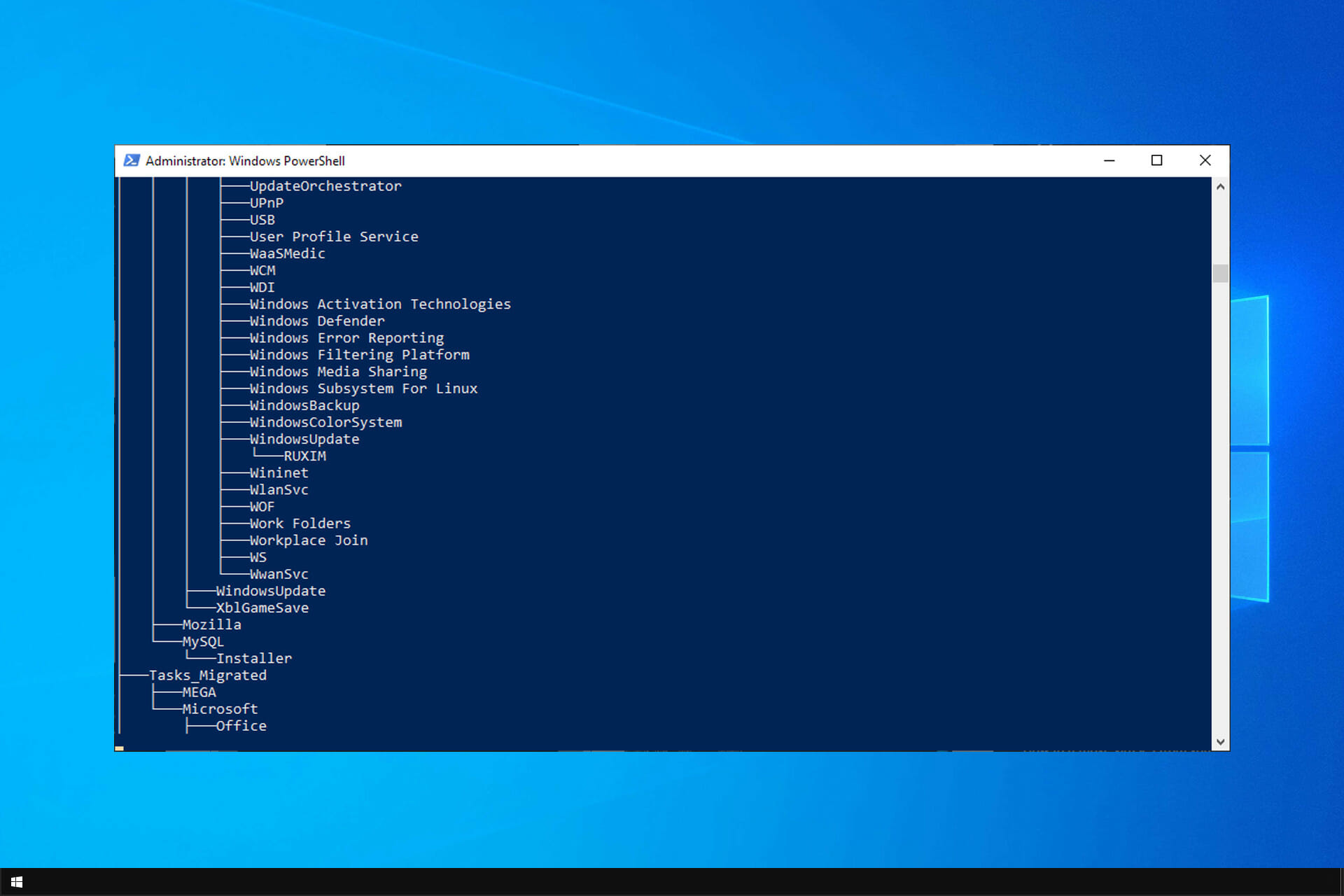How to Remove Hackers from Computer Windows 10
To remove hackers from a Windows 10 computer, run a full system scan using antivirus software. Ensure the software is up-to-date with the latest security patches.
When it comes to cyber threats, protecting your computer from hackers is essential. Hackers can gain access to sensitive information, compromise your system, and disrupt your digital life. By taking proactive steps to remove hackers from your Windows 10 computer, you can safeguard your data and maintain the security of your device.
One of the most effective ways to combat hackers is by running a thorough scan using reliable antivirus software. This process will help detect and eliminate any malicious programs or malware that may have infiltrated your system. By following these steps, you can enhance the security of your Windows 10 computer and minimize the risk of falling victim to cyber-attacks.
Identifying Signs Of Hacking
If you suspect hacking on your Windows 10 computer, look out for signs like unusual system behavior, unauthorized account activity, or unfamiliar files. To remove hackers, utilize reputable antivirus software, change passwords, and conduct system scans for malware. Keep your operating system and security software updated to prevent future breaches.
Unusual System Behavior
If your computer suddenly starts acting strange or you notice unexplained changes, it could indicate a potential hack. Look out for slow performance and frequent crashes as these could be signs of malicious activity.
Unknown Programs Or Processes
Check your task manager for programs or processes that you do not recognize. Hackers may install hidden software to gain access to your system. Monitor your system regularly to detect any suspicious activities.

Credit: windowsreport.com
Securing Default Passwords And Settings
When it comes to ensuring the security of your Windows 10 computer, securing default passwords and settings is crucial. By changing default passwords and updating firewall settings, you can effectively safeguard your system from hackers.
Change Default Passwords
Default passwords are common entry points for hackers. Change these to unique and strong passwords for enhanced security.
Update Firewall Settings
A firewall acts as a barrier against unauthorized access to your computer. Ensure regular updates and configurations for optimal protection.
Running Antivirus And Antimalware Scans
Running antivirus and antimalware scans is a crucial step in removing hackers from your Windows 10 computer. In this section, we will discuss how to choose a reliable antivirus program and perform full system scans to ensure the safety of your device.
Choosing A Reliable Antivirus Program
When it comes to selecting an antivirus program, it's essential to choose a reliable and effective solution. Here are a few key considerations:
- Look for well-known and reputable antivirus software providers.
- Read reviews and check ratings to determine the reliability of the program.
- Consider the features offered, such as real-time scanning, automatic updates, and web protection.
- Ensure the antivirus program is compatible with Windows 10.
By opting for a reliable antivirus program, you can enhance your computer's security and protect it against potential hacker attacks.
Performing Full System Scans
Performing regular full system scans is vital to identify and eliminate any existing malware or suspicious files on your Windows 10 computer. Follow these steps:
- Open your chosen antivirus software program.
- Locate the option for a full system scan.
- Initiate the scan and wait for it to complete.
- Review the scan results for any detected threats.
- If any threats are found, follow the prompts to remove or quarantine them.
- Regularly schedule full system scans to maintain the security of your computer.
Running these scans periodically ensures that your system remains protected and free of any potential hacking attempts.
In conclusion, running antivirus and antimalware scans is an effective way to remove hackers from your Windows 10 computer. By choosing a reliable antivirus program and performing regular full-system scans, you can maintain the security and integrity of your device.

Credit: www.itisepoch.com
Updating Operating System And Software
Keeping your operating system and software updated is crucial for safeguarding your computer against hackers. Outdated systems and applications are more vulnerable to security breaches. By regularly checking for Windows updates and updating third-party applications, you can bolster your computer's defenses and prevent unauthorized access.
Checking For Windows Updates
To ensure your Windows 10 system is well-protected, regularly check for updates. Here's how to do it:
- Click on the Start button and go to Settings.
- Choose Update & Security.
- Click on Windows Update, then select Check for updates.
- If updates are available, click Install Now to apply them.
Updating Third-party Applications
It's not just the operating system that requires attention - third-party applications also need to be kept up to date. Here's how to update them:
- Open the respective application or program.
- Look for an option related to updates within the software or visit the official website for the latest version.
- Download and install the updates to ensure you have the most secure versions of your applications.
Enabling Two-factor Authentication
Using Mobile Apps
One method of implementing two-factor authentication on your Windows 10 computer is by using mobile apps. Choose a reputable authenticator app that generates a unique code to verify your identity.
Once downloaded, link the app to your Windows 10 account. Whenever you log in, you'll be prompted to enter a time-sensitive code from the app, adding an extra layer of security.
Implementing Biometric Authentication
Another way to enable two-factor authentication is through implementing biometric authentication. Leverage the biometric capabilities of your Windows 10 device, such as fingerprint or facial recognition, to enhance security.
After setting up, you'll need to use your biometric data in addition to your regular password for access, diminishing the risk of unauthorized access.
Removing Suspicious Or Malicious Software
When it comes to computer security, one of the key steps you should take is to remove any suspicious or malicious software from your Windows 10 system. These unwanted programs can not only slow down your computer but can also compromise your personal data, leaving you vulnerable to cyber-attacks.
In this blog post, we will explore two effective methods for removing such programs: uninstalling unknown programs and using malware removal tools.
Uninstalling unknown programs is a quick and easy way to rid your computer of unwanted software. Here's how you can do it:
- Press the Windows Key + X on your keyboard to open the Start menu.
- From the menu, select "Apps and Features".
- A list of installed programs will appear. Scroll through the list and look for any unfamiliar or suspicious programs.
- Select the program you want to remove and click on the "Uninstall" button.
- Follow the on-screen prompts to complete the uninstallation process.
This method allows you to manually remove unknown programs that may have been installed without your knowledge. Remember to keep your software up-to-date to prevent any future unauthorized installations.
In addition to uninstalling unknown programs, using malware removal tools can provide an extra layer of protection against hackers. These tools are specifically designed to scan your computer for malicious software and remove it. Here are a few malware removal tools you can consider:
| Name | Description | Website |
|---|---|---|
| Malwarebytes | An advanced malware detection and removal tool. | www.malwarebytes.com |
| Avast Antivirus | A comprehensive antivirus program with built-in malware removal capabilities. | www.avast.com |
| Windows Defender | A free antivirus program is included with Windows 10, including malware removal features. | www.microsoft.com |
By regularly running these tools and keeping them updated, you can detect and remove any malicious software that may be hiding on your computer.
Stay vigilant when it comes to computer security. Uninstalling unknown programs and using malware removal tools are crucial steps in keeping hackers at bay, and ensuring the well-being of your Windows 10 system.
Strengthening Passwords And User Accounts
Protect your Windows 10 computer from hackers by reinforcing passwords and user accounts. By enhancing these security measures, you can significantly reduce the risk of unauthorized access and potential breaches.
Creating Strong Passwords
- Use a combination of uppercase letters, lowercase letters, numbers, and special characters.
- Avoid using easily guessable information like birthdays or pet names.
- Consider using passphrases that are easy to remember but difficult to crack.
Enabling User Account Controls
- Go to the Control Panel and select "User Accounts".
- Click on "Change User Account Control Settings" and adjust the slider to the desired level of security.
- Ensure that you receive notifications for changes to your computer by user accounts.

Credit: m.youtube.com
Securing Wi-fi Networks
Protecting your Wi-Fi network is crucial to prevent hackers from infiltrating your Windows 10 computer. By following best practices, you can enhance the security of your network and keep malicious users at bay.
Changing the Default Network Name And Password
Alter default network credentials to strengthen network security and deter hackers seeking easy access.
Using Network Encryption
Employ strong encryption protocols like WPA3 to safeguard your data from unauthorized access.
Frequently Asked Questions On How To Remove Hackers From Computer Windows 10
What Are The Signs Of A Computer Being Hacked?
If your computer displays unusual pop-ups or crashes frequently, it could be hacked.
How Can I Remove Hackers From My Windows 10 Computer?
Update your antivirus software, run a full system scan, and change your passwords.
Why Is It Important To Remove Hackers From My Computer?
Hackers can steal sensitive information and cause damage to your system.
What Should I Do After I Remove Hackers From My Computer?
Regularly update your antivirus software and strengthen your passwords to prevent future attacks.
Can I Remove Hackers From My Computer Without Antivirus Software?
It is highly recommended to use antivirus software to effectively remove hackers.
Conclusion
Securing your computer from hackers is crucial in today's digital age. By following the steps outlined you can effectively remove hackers from your Windows 10 system. Remember to regularly update your operating system, install reliable antivirus software, use strong and unique passwords, be cautious of phishing attempts, and enable two-factor authentication for added security.
With these measures in place, you can protect your personal and sensitive information from potential cyber threats.






